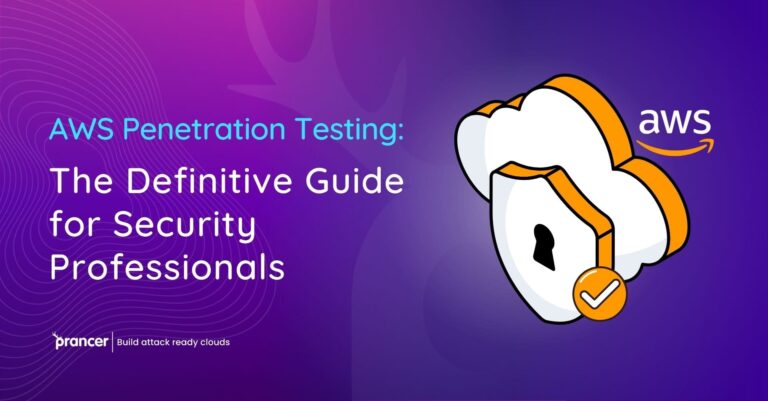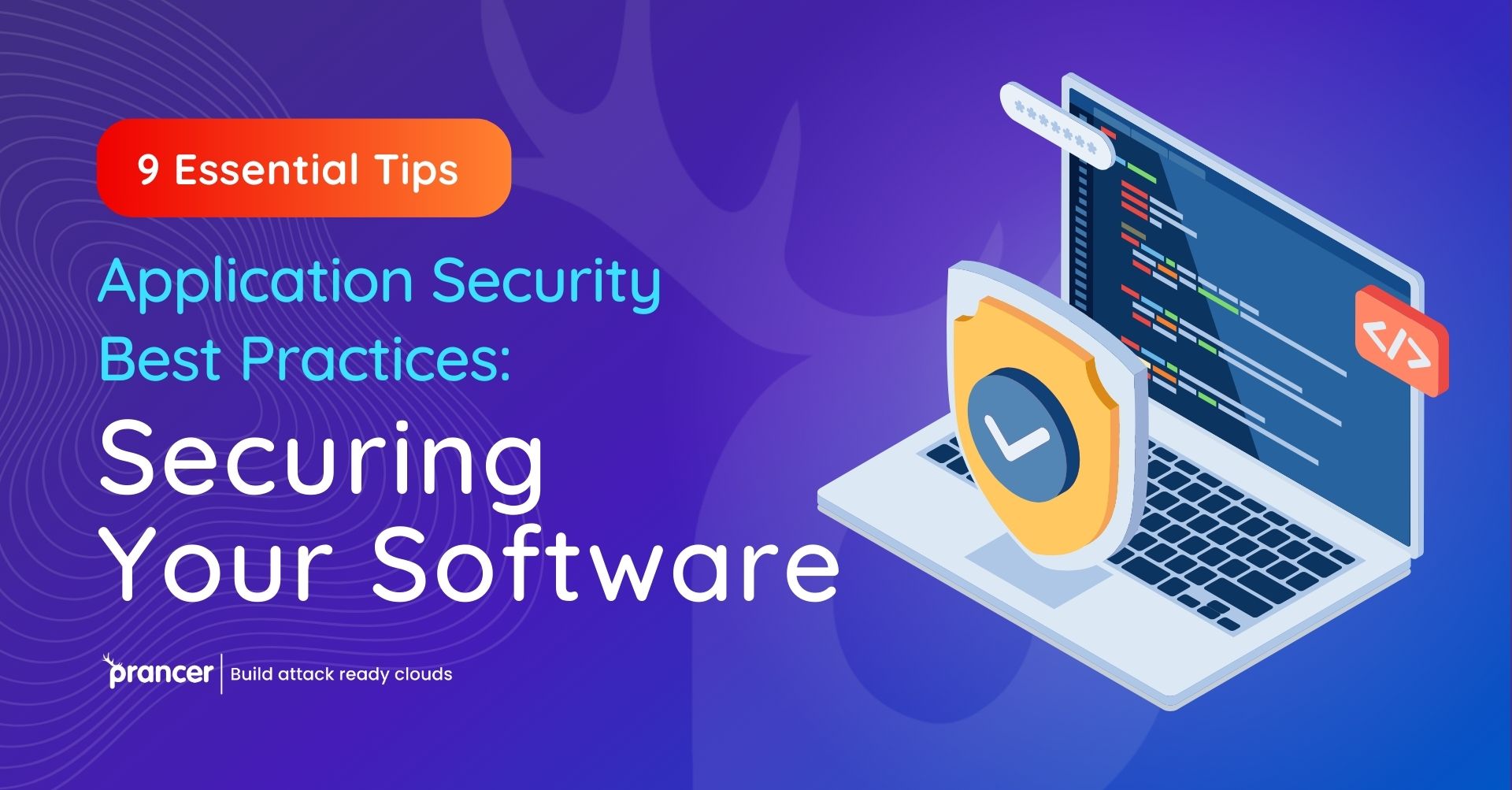

In a digital world that’s always in the fast lane, the security of your applications is the seatbelt that keeps your operations safe amidst the rough and tumble. With cyber rogues constantly upping their game, ensuring your software is an impenetrable fortress is vital. In this piece, we unpack the treasure trove of Application Security Best Practices, aiming to arm cybersecurity aficionados with the tools needed to shield their digital realms. Prancer, a vanguard in automated penetration testing solutions, lends its expertise to this narrative, ensuring you’re well-versed in security best practices to fortify your software.
Lay a solid foundation with ongoing code reviews and testing to spot vulnerabilities early on, saving both time and resources as your project matures.
Maintain your software’s vigor by timely applying security patches and updates. Remember, outdated software is a goldmine for attackers.
Establish sturdy authentication and authorization mechanisms, ensuring only the vetted individuals can access the critical areas of your application.
Keep your data cloaked both while it’s on the move and at rest, employing robust encryption algorithms to preserve its confidentiality and integrity.
School your development brigade about the tenets of secure coding—input validation, output encoding, and parameterized queries—to fend off common foes like SQL injection and cross-site scripting (XSS).
Station web application firewalls (WAFs) to scrutinize and filter incoming traffic, nipping potential threats in the bud before they reach your application.
Adopt a principle of least privilege (PoLP) strategy, ensuring each user and process only has the bare minimum access required to perform its duties.
Craft a robust incident response blueprint to swiftly identify, contain, and mitigate the tremors caused by security breaches.
Harness the prowess of automated penetration testing, courtesy of Prancer, to constantly evaluate your application’s security stance, helping you stay ahead in the cat-and-mouse game with cyber adversaries.
Specializing in automated penetration testing, Prancer extends state-of-the-art solutions aimed at bolstering your application security. The alignment of our expertise with the essence of this blog underscores the pivotal role automated penetration testing holds in unearthing and addressing vulnerabilities.
Incorporating Prancer’s automated penetration testing into your security regimen can heighten your confidence in your application’s security shield. Our avant-garde testing methodologies help you keep a step ahead of the nefarious actors, ensuring your software stands tall against emerging threats.
Prancer’s automated penetration testing solutions are like a speed workout for your security setup, significantly hastening the security assessment marathon. By simulating real-world attack scenarios, it pinpoints the Achilles’ heels that could be exploited by malevolent actors. The automation facet enables more frequent testing, early vulnerability detection, and consequently, a diminished likelihood of security breaches.
With the ever-changing digital world, strong application security is vital. This article focuses on the need for automated penetration testing and basic security practices. So, key tactics involve the continuous code auditing, regular patch management , strong authentication protocols and usage of Prancer’s more advanced penetration testing tools. By utilizing these methods in combination, Prancer plays a part in bolstering digital defenses through pioneering testing and security solutions that keep software safe as cyber threats become more intricate.
But even in the current dynamic digital environment, proper application security should not be overlooked. This holistic review focuses on the main role of automated penetration testing and other essential security features that together increase software protection. Prancer is the best in automated penetration testing, and it has good tools to support such a defensive measure.
The Automated Application Security Best Practices Extension
Advanced Continuous Code Auditing and Testing: For automated continuous auditing systems, instead of regular code reviews. These systems rely on complex algorithms that identify more subtle, less obvious weaknesses which would have remained unnoticed during manual audits.
Enhanced Patch Management Strategies: Adopt more proactive patch management tools that can assist in monitoring, testing and applying patches faster. This shortens the time that old software leaves a window of opportunity.
Next-Level Authentication and Authorization Protocols: Take the authentications process to another level by introducing biometrics and multi-factor authentication. Develop risk-based dynamic authorization protocols for context sensitive and adaptive systems.
End-to-End Data Encryption Techniques: Include advanced encryption mechanisms far beyond the typical ones based on new algorithms and methods of data encrypting in all possible cases.
Educating on Advanced Secure Coding Practices: Add more methods and dangers to secure coding training. Rather, pay more attention to the existing weaknesses and defensive coding methods adapted for contemporary application design.
Deploying Intelligent Application Firewalls: Use modern WAFs based on machine learning and AI to prevent more advanced attacks.
Redefining Access Control: Employ a more advanced AI-driven PoLP strategy that controls access permissions according to risk evaluation and user pattern analysis.
Dynamic Incident Response Plan: Develop adaptive incident response plans that can be customized as threats evolve. Develop automatic response protocols that will respond promptly and effectively to breaches.
Therefore, Prancer’s Automated Penetration Testing Plays a Vital Role
Proactive Vulnerability Identification: Prancer’s solutions are very effective in identifying threats before they can be used. This futuristic approach is essential since it allows organizations to be one step ahead of the cyber attackers.
Comprehensive Security Assessments: It is possible to find vulnerabilities that are visible on a larger area than with traditional approaches thanks to Prancer’s automated penetration testing.
Regular and In-Depth Testing: Automation increases the frequency and scope of testing, which results in earlier detection of security threats with lower breach risks.
Impact of Application Security and Automation.
Streamlined Security Processes: Automated tools simplify the security procedures, and this makes it easier to manage application safety.
Adaptability to Evolving Threats: Automated systems are capable of detecting and reacting to new threats, which in turn enables not only relevance but also protection strength against even advanced attacks.
Enhanced Security Posture: The combination of the proposed best practices that strengthen an application security from cyber threats and Prancer’s elite automated penetration testing tools
Finally, the combination of automated penetration testing with other sophisticated security tools creates an impregnable barrier against dangers arising from contemporary cyber perils. The highest level of this integration is Prancer’s solutions, which are not only defensive but also adjustable in the changing threatscape.
Conclusion:
In the dynamic theater of cybersecurity, being a step ahead of potential threats is crucial. The Application Security Best Practices outlined here are your shield and sword against cyber onslaughts. Adhering to these nine indispensable tips, complemented by Prancer‘s automated penetration testing, you’re well on your way to securing your software robustly. Cybersecurity isn’t a one-off project but a continual journey. Keep updating your knowledge, fine-tuning your practices, and adapting to new threats to ensure your software remains an unyielding fortress amidst a landscape of evolving cyber threats.
